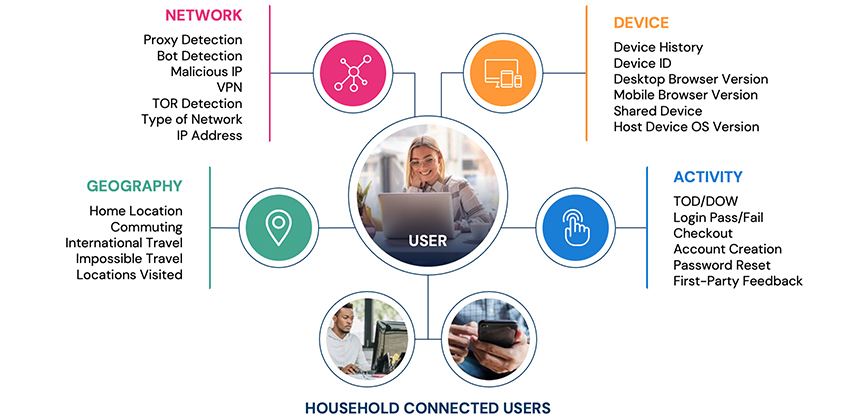Want to Stop Fraud & Improve UX? Bots are Only Half the Problem.
Humans can be pretty bad, too
Humans can be pretty bad, too
It’s a bot-eat-bot world out there. 77% of cybersecurity incidents are bot-based, and bot management companies, such as Human Technologies and PerimeterX, are merging to outgun malicious robo-fraudsters.
This begs a crucial question: What about humans? Don’t get us wrong—we’re all for short-circuiting those bad bots—but there are still those pesky bad actors you have to worry about, too. (Those bots don’t create themselves, you know.)
Below, we look closer at the bot craze in the current fraud landscape, the downside of solely doubling down on bots, and why differentiating between legitimate and illegitimate humans is just as important.
Bot-y slammed
Human Technologies and PerimeterX joining forces, as well as Thoma Bravo’s acquisition of Ping Identity, underlies a consolidation trend that’s emerged over the past few months. Irrespective of industry, some of these mergers are due to plummeting valuations; but, in the case of cybersecurity companies—who enjoyed a record year of funding in 2021—many are partnering because the growing threat of data breaches, exacerbated by the normalization of remote work, is simply too much to handle.
Like Human and PerimeterX, we may see other bot vendors merge before year’s end. It’s understandable given how sophisticated bots have become in a short amount of time. They’ve grown to be disturbingly human-like, adaptable, and subsequently much more difficult to spot, swiping personally identifiable information (PII) off websites, engaging in click fraud to boost ad revenue, and otherwise profiting from other shady tactics.
Bots are scary, indeed. So are their seedy human counterparts. Companies enlisting a fraud prevention solution need to understand that stopping bots is only half the battle; neutralizing living, breathing fraudsters—without hindering the user experience (UX)—is the final piece.
Identity intelligence, anyone?
So, you’re on board with putting the clamps on bad bots AND bad humans? Awesome. The next step is to ensure your fraud prevention solution of choice is leveraging the right kind of data, i.e., identity intelligence.
Most anti-fraud tools rely on behavioral biometrics. While it’s effective against bots, it can also cause serious UX issues in the form of false positives. Behavioral biometrics—which monitors behavior such as keystrokes, mouse movement, finger tapping, etc.—will easily trigger a multi-factor authentication (MFA) request if a user deviates from their typical pattern. A drunk or sick user may type or speak unusually (gait analysis); a user with different keyboards at work and at home might be flagged incorrectly (keystroke analysis).
Another flaw of behavioral biometrics is that stockpiling enough personal data to successfully analyze a user’s behavior takes time. A solution centered around identity intelligence, on the other hand, has all of the data it needs in real-time.
It’s time for real-time
If companies want to stop bots and humans alike, real-time identity intelligence is the ticket. Deduce packs more of this data than any other solution, making it a thoroughly accurate standalone or complementary defense system that won’t muck up UX.
Deduce is home to the largest real-time identity graph for online fraud in the US. Its Identity Network leverages more than 500 million unique user profiles and over 1.4 billion daily activities to recognize legitimate users and prevent account takeover—including synthetic identity fraud.
Want to see how Deduce can spot bad bots and humans and help create a Trusted User Experience? Contact us today.










